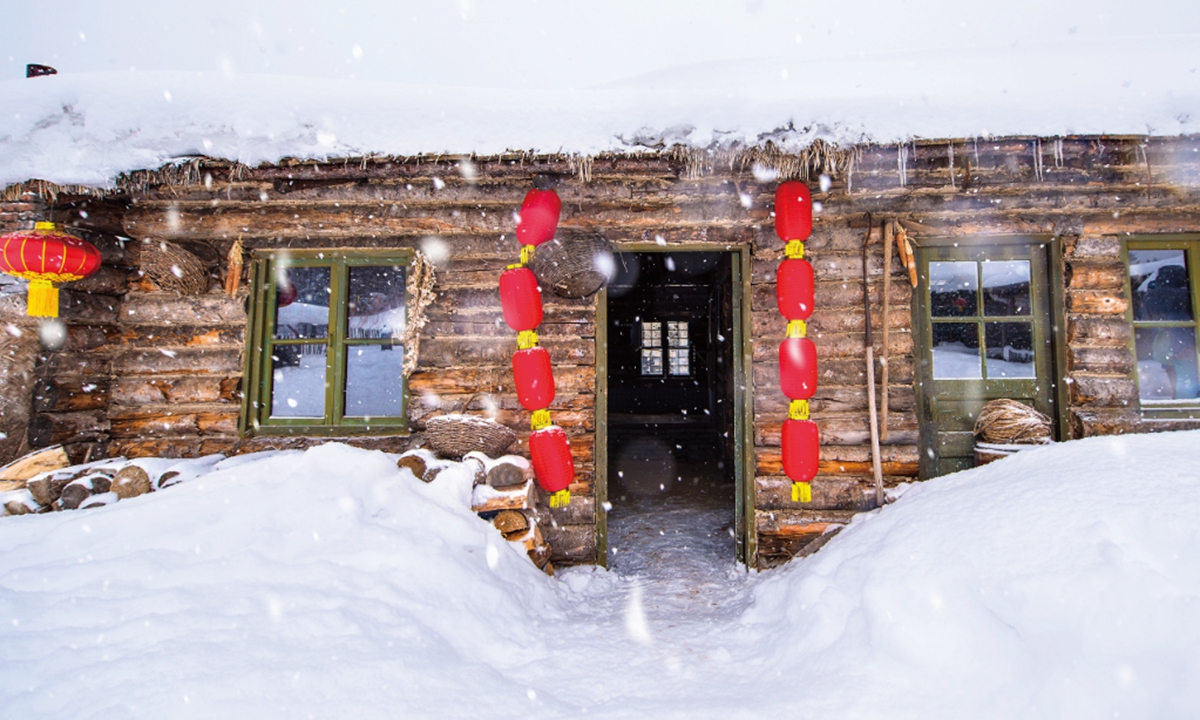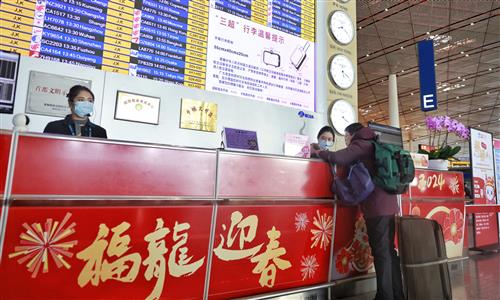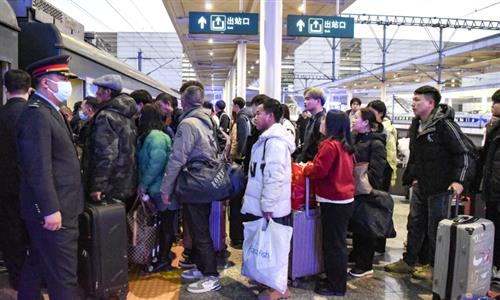ARTS / CULTURE & LEISURE
Winter’s warm bath centers become social hubs in ice-covered NE China
New way for fun

A cottage is covered with snow in Mudanjiang, Northeast China's Heilongjiang Province.Photo:VCG
Throughout the 2024 New Year holidays, the allure of "cross-country travel" remains a prominent topic on Chinese social media, and countless visitors continue to flock to Northeast China in search of an authentic "winter taste."
In the past month, the "ice city" Harbin in Northeast China's Heilongjiang Province has been placed under the spotlight. The whole Northeast China has been a tourism sensation this winter since December 2023, attracting millions of domestic and international travelers.
In addition to being a delightful fusion of cuisine and winter sports shaped by the city's historical and geographical context, another market also emerged: bath centers, or bathhouses, which serve as unique socializing venues and are ubiquitous in northeastern Chinese cities.
A place for all
Inside a splendidly decorated three-story building, many tourists who have come to experience the northeastern bathing culture are chatting loudly in the lavishly decorated lobby.
Yet a bathhouse is more than a place for a bath as it is usually equipped with a small cinema, a mahjong area, a spa area, and sometimes even a karaoke room. This is a place for people to socialize, discuss their future and relax. For locals, bathing is a "recreational activity" in their daily life, with public data indicating that only 10 percent of bathing centers across the country cover an area of more than 5,000 square meters, and more than half of the top-ranked bathing centers are located in the Northeast.
What made bathing a cultural hallmark for Northeast China?
In the past, heating systems were a luxury afforded only by wealthy families. Given the extreme cold weather of Northeast China and people's hygeian needs, public bathing facilities gradually emerged.
However, even as more households in the region have private bathing facilities today due to its increased prosperity, an intriguing trend unfolded: Public bathing facilities continued to thrive despite the option of home showers.
Cultural sociologist Xu Shuming told the Global Times that the growing popularity of public baths reveals how the concept of "bath" has transformed from a "domestic behavior" to a "social event" fostering emotional bonds.
"Just like people would catch up in cafe and cinema, public bathing venues are great places for socializing and fortifying relationships," Xu noted, adding that this cultural shift is reflected in the media, as seen in the 2020 Chinese film Bath Buddy, which portrays the heartwarming journey of the protagonist from a wealthy man to an ordinary worker at a bathing center.
National hot trend
This cultural trend has now become a national phenomenon. The influence of ice and snow tourism brought by the 25th Harbin Ice and Snow World has extended to the bathing culture on cold winter days.
According to China's ticketing platform Meituan, orders for bathing centers increased by 180 percent year-on-year in the two days leading up to the New Year holidays. Among them, the growth rate of orders for bathing centers in Shenyang, Harbin, Changchun, and other places in northeastern China outperformed the national market.
"The bath centers are so popular during the holidays. I remembered that the waiting list for my turn in the bathing center started from guest number 200," Liu Shanshan, a tourist from East China's Zhejiang Province, told the Global Times on Wednesday.
A staff member at a bathing center in Shenyang, Liaoning Province, also mentioned to Yicai News that the average daily customer flow during the New Year's holidays can be as high as 2,500, half of whom were customers from southern China. "And queues normally start forming at the gate at around 11 am."
The bathing centers are not only loved by locals for their strong social nature, but also become must-visit destinations for tourists from the south during their journeys just a couple of days ago, adding to their appeal.
Their popularity is quite understandable, especially for those determined to experience the full range of entertainment offered by Northeast China, requiring them to spend a whole day from morning to evening.
In addition to the fascinating local bathing culture, Northeast China also boasts a rich cuisine. Many cities like Shenyang, Changchun and Harbin, are renowned for their iconic "morning markets" which provide a glimpse of the authentic lifestyle of the locals.
The morning markets often open at around 6 or 7 am in the morning. They usually involve a diverse array of vendors selling organic vegetables, fruit, meat products, and local snacks.
The best meal deal for a visitor contains a bowl of soft bean curd soup, a couple of sticky red bean buns, and a fresh bowl of local strawberries or a frozen pear.
The frozen pear may have a somewhat unconventional appearance due to their black color, however, they actually taste sweeter and juicier as a result of undergoing a low-temperature preservation.
This interesting food processing method has ancient origins, being born from the locals' tradition of using the local cold weather to preserve foods. The method has been passed down through generations till now, a frozen pear can immediately remind a person about his or her hometown. Zhu Lisha, a 23-years-old student in Beijing, told the Global Times that ordering online some frozen pears or sticky red bean buns are her go-to remedies when feeling homesick.
"The flavor of these snacks brings me back home [to Shenyang], and the taste of my hometown's cuisine makes me hold my head high while navigating crowded metropolises like Beijing and Shanghai," confessed Zhu.



